#Best 3D Modeling Assignment Help Online
Explore tagged Tumblr posts
Text
Mastering 3D Modeling: Expert Solutions to Complex Assignments

Welcome to our domain of expertise, where precision meets creativity, and challenges transform into triumphs. At SolidWorksAssignmentHelp.com, we pride ourselves on being the beacon of guidance for students navigating the intricate realm of 3D modeling. Our mission is simple yet profound: to offer the Best 3D Modeling Assignment Help Online, equipping aspiring designers and engineers with the tools they need to excel.
Today, we delve into the depths of two master-level 3D modeling questions, providing comprehensive solutions crafted by our seasoned experts. These challenges epitomize the complexity and nuance inherent in the world of three-dimensional design, demanding a blend of technical prowess and artistic vision to conquer.
Question 1: Designing a Complex Mechanical Assembly
Imagine you're tasked with modeling a sophisticated mechanical assembly comprising intricate components with precise interlocking mechanisms. Your goal is to create a fully functional representation of the assembly, allowing for realistic movement and interaction between parts.
Solution:
To tackle this challenge effectively, we employ a systematic approach, breaking down the assembly into individual components before integrating them seamlessly. Utilizing SolidWorks, our preferred software for 3D modeling, we start by sketching the basic outlines of each part, paying close attention to dimensions and tolerances.
Next, we proceed to extrude and revolve these sketches to give them depth and form. For complex components, such as gears or cams, we leverage advanced features like lofting and swept cuts to achieve the desired shapes. Assembling the parts involves employing mate relationships judiciously, ensuring proper alignment and movement constraints.
Through meticulous iteration and refinement, we fine-tune the assembly, testing each component's functionality and addressing any discrepancies or interference. Finally, we add realistic textures and appearances to enhance visual fidelity, culminating in a stunning rendition of the mechanical marvel.
Question 2: Sculpting a Lifelike Character Model
In this challenge, you're tasked with sculpting a lifelike character model, imbued with personality and depth. The emphasis lies not only on anatomical accuracy but also on conveying emotion and expression through the subtle nuances of form and gesture.
Solution:
Embarking on this creative journey, we leverage the power of digital sculpting tools like ZBrush to breathe life into our character. We begin by blocking out the basic proportions, establishing the skeletal framework upon which we'll build intricate detail.
Layer by layer, we sculpt the finer features of the character, paying meticulous attention to anatomical landmarks and surface contours. Employing techniques such as dynamesh and subdivision sculpting, we refine the model's form, adding depth and definition to muscles, facial features, and clothing folds.
But our focus extends beyond mere anatomy; we strive to capture the essence of our character's personality through subtle cues and expressions. Whether it's a wry smile, furrowed brow, or quizzical glance, each detail contributes to the narrative richness of the model.
To further enhance realism, we incorporate texturing and shading techniques, adding depth and dimensionality to the surface. Through the judicious use of materials and lighting, we create a visual narrative that invites the viewer to engage with the character on a profound emotional level.
In conclusion, mastering the art of 3D modeling requires more than just technical proficiency; it demands a blend of skill, creativity, and intuition. At SolidWorksAssignmentHelp.com, we're committed to empowering students with the knowledge and expertise they need to excel in this dynamic field. With our guidance, you can navigate even the most challenging assignments with confidence and finesse. Experience the difference today and unlock your full potential in the world of 3D modeling.
12 notes
·
View notes
Text
Unlock Your Creativity: Domestika's Inspiring Online Courses
Domestika is a platform that offers a variety of online creative courses taught by professionals from different fields such as design, illustration, photography, animation, craft, and more. These courses are designed to help individuals learn new skills, improve their techniques, and unleash their creativity.
Here are some key features of Domestika online courses:
Diverse Course Catalog: Domestika offers a wide range of courses, each focusing on a specific creative skill or discipline. This includes courses on graphic design, watercolor painting, digital illustration, photography techniques, 3D modeling, and many others.
Experienced Instructors: The courses are taught by experienced professionals who are experts in their respective fields. Instructors often share their personal insights, tips, and techniques, helping students learn from their expertise.
Video Lessons: The courses usually consist of pre-recorded video lessons that you can watch at your own pace. These videos are often accompanied by downloadable resources like project files, assignments, and supplementary materials.

Community Interaction: Many courses have a community aspect, where students can interact with each other and the instructor through forums, discussion boards, and project sharing. This creates a collaborative learning environment.
Lifetime Access: Once you purchase a course, you typically have lifetime access to the course materials. This allows you to revisit the content and practice your skills whenever you want.
Projects and Assignments: Courses often include hands-on projects and assignments that help you apply what you've learned. Completing these projects can give you a tangible sense of progress and achievement.
Certificate of Completion: After finishing a course, you may receive a certificate of completion, which can be a nice addition to your portfolio or resume.
Mobile App: Domestika also offers a mobile app, making it convenient for you to access course materials and continue learning on the go.
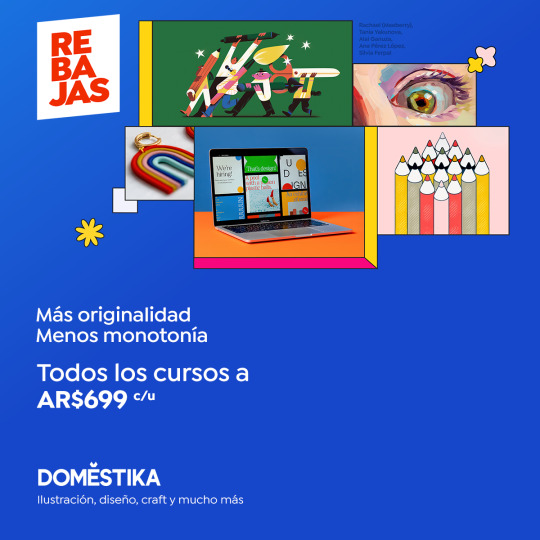
To get started with a Domestika course, you can visit their website, browse the course catalog, and choose a course that aligns with your interests and goals. Keep in mind that each course may have different requirements and levels, so make sure to read the course descriptions and reviews to find the one that suits you best.
#DomestikaCourses#LearnCreatively#MasterYourSkills#CreativeLearning#DomestikaCommunity#OnlineArtClasses#SkillBuilding#UnleashYourTalent#DomestikaInspiration#LifelongLearning
17 notes
·
View notes
Text
Top NIFT Entrance Exam Coaching Institutes in India: A Complete Guide

When it comes to preparing for the NIFT Entrance Exam, success depends not only on talent but also on the quality of coaching and mentorship you receive. In a competitive landscape where creativity, design aptitude, and strategic thinking are evaluated under time pressure, the right guidance is everything. That’s where Vantage Design stands out as the leading coaching institute for NIFT aspirants in India.
Why Vantage Design is the Best Choice for NIFT Exam Coaching
At Vantage Design, we believe that every design aspirant is unique, and so is their learning journey. That’s why our NIFT entrance exam coaching is crafted to deliver personalized, comprehensive, and result-oriented training for students who are determined to make their mark in the design world.
Our Core Strengths:
Expert-Led Coaching: Our faculty comprises NIFT and NID alumni, industry experts, and experienced educators who bring years of domain knowledge into every session.
Customized Learning Paths: Whether you are a beginner or repeating the exam, our structured NIFT exam courses are tailored to your individual goals and pace.
Updated Curriculum: All our content is aligned with the latest NIFT entrance exam pattern, covering CAT, GAT, Situation Test, and Personal Interview preparation.
Practice & Performance: Regular mock tests, creative assignments, and review sessions help students measure progress and improve consistently.
Focused Mentorship: One-on-one sessions, portfolio reviews, and doubt-clearing classes ensure students get the attention they need.
Top Results: Year after year, our students secure seats at top NIFT campuses across India, a true testament to our commitment and methodology.
Comprehensive NIFT Exam Course at Vantage Design
Our NIFT exam course is a complete training program designed to equip students with everything they need to ace the entrance test. It includes:
Creative Ability Test (CAT) Training: Build your imaginative thinking, visual expression, sketching, and design concepts with expert support.
General Ability Test (GAT) Preparation: Strengthen your English, logical reasoning, quantitative aptitude, general knowledge, and communication skills.
Situation Test Guidance: Learn the art of material handling, 3D model making, and storytelling to excel in the second round of the NIFT entrance process.
Interview and Portfolio Development: Our faculty helps students present their creative journey effectively to stand out during the interview process.
With both offline and online coaching for the NIFT Entrance Exam, we give students the flexibility to learn from anywhere in India, without compromising quality.
Why Choose Online NIFT Coaching from Vantage Design?
In today’s dynamic learning environment, our Online Coaching offers the same level of excellence as our physical classrooms. Designed to reach students across cities, towns, and remote locations, Vantage Design’s online coaching is ideal for aspirants who want flexibility without losing the personal touch.
Features of Our Online NIFT Coaching:
Live classes with interactive Q&A
Access to recorded sessions anytime
Digital assignments with expert feedback
Real-time performance analytics
Online mock tests and practice series
Exclusive webinars and design workshops
Whether you're a school student, a working professional, or someone taking a gap year, our Online Coaching Programs allow you to prepare with ease and convenience.
Best Book for NIFT Entrance Exam | Expert Recommendations by Vantage Design
Our coaching methodology is backed by a curated selection of the best books for the NIFT entrance exam, chosen by our experienced faculty. These resources include:
Detailed theory guides for CAT & GAT
Practice workbooks with sketching exercises
Visual and creative reference materials
Sample papers and mock tests based on real exam formats
Each book we recommend has been handpicked to support both conceptual clarity and practical application. Our mentors will guide you on how to study from these resources effectively, making sure you extract maximum value from every page.
Vantage Design’s Success Stories: Real Results, Real Impact
What truly sets Vantage Design apart is our commitment to student success. We don’t just coach, we mentor, support, and inspire our students through every stage of their preparation. Our alumni are now thriving at top NIFT campuses and working with leading fashion, textile, and design brands across the globe.
We’re proud to be the launchpad for India's top design talent, and our growing community of successful students reflects the power of focused training and consistent support.
Key Benefits of Choosing Vantage Design for NIFT Entrance Coaching
High Selection Rate in NIFT Exams
Personalized Learning Strategy
Rich Resource Library
Creative Thinking Development
Pan-India Access through Online Classes
Expert Help with Application Process
Portfolio Guidance & Situation Test Mastery
Whether you're just starting your NIFT journey or looking to improve your previous score, Vantage Design is your one-stop solution for top-tier NIFT Exam Coaching in India.
How to Enroll in Vantage Design’s NIFT Coaching Program
Getting started with us is easy. Whether you want in-person coaching or the best online coaching for the NIFT entrance exam, our team will guide you at every step. You can explore our programs, book a free counseling session, or directly register online.
Conclusion
Success in the NIFT entrance exam doesn’t come from talent alone; it comes from the right training, mentorship, and disciplined effort. At Vantage Design, we provide everything you need to succeed: expert coaching, best-in-class study materials, and a learning environment that brings out your best. If you’re serious about joining India’s top design institute, choose Vantage Design, where design dreams turn into career realities.
0 notes
Text
Are you looking for Mechanical cad training in tambaram?
CADD Centre in Tambaram offers professional and industry-aligned Mechanical cad training in tambaram designed for aspiring engineers, designers, and professionals aiming to specialize in CAD/CAM/CAE using Siemens NX software. NX is a powerful and advanced product development solution used by leading manufacturing industries across the globe for design, engineering analysis, and manufacturing. At CADD Centre, students gain hands-on training that equips them with the skills needed to thrive in today’s competitive engineering landscape.
The NX training program at CADD Centre Tambaram covers a wide range of modules including 3D modeling, drafting, surface modeling, assembly design, sheet metal design, and manufacturing (CAM) applications. The course is structured to meet the needs of mechanical, automobile, aerospace, and industrial design professionals and is available for both beginners and experienced candidates.
Learners work on industry-specific assignments that mimic actual engineering problems, thereby enhancing their problem-solving and design thinking capabilities. Training is delivered by certified instructors with rich industry and teaching experience. With personalized attention and structured course materials, students can master complex tools and techniques with confidence.
CADD Centre provides a modern learning environment with access to the latest NX software, high-end systems, and well-equipped labs. The curriculum follows the latest trends and updates from Siemens, ensuring learners stay current with the latest innovations and best practices in the CAD/CAM domain.
In addition to technical training, the center offers placement support, resume building workshops, and mock interviews to help students transition smoothly into employment. Many students from CADD Centre Tambaram have successfully secured positions in top MNCs, engineering consultancies, and design firms.
Flexible batch timings, including weekend and evening classes, make the course ideal for working professionals and college students. Online training options are also available for those who prefer remote learning.
CADD Centre Tambaram is known for its commitment to quality education, strong industry connections, and career-oriented training. Upon successful completion of the NX course, students receive a globally recognized certificate, which adds value to their professional portfolio.
Whether you’re looking to advance your career, start a new profession in design and manufacturing, or enhance your existing skill set, NX training at CADD Centre Tambaram is your gateway to success.
0 notes
Text
Why Revit Architecture Course is a Must for Civil Engineers and Architects
In the constantly changing world of the AEC (Architecture, Engineering, and Construction) industry, traditional drawing methods are rapidly becoming outdated. Modern construction requires more sophisticated and more collaborative, highly efficient designs. This is the reason why Revit's software classes are available. No matter if your profession is civil engineering, architecture or MEP professional, acquiring Revit will significantly improve your documentation, design, and project execution skills.
This blog will look at the reasons why registering for an Architectural course in Revit is vital for professionals working in the construction industry, and how an appropriate Revit online class will help you advance your job.

What is Revit, and Why is It Important?
Revit, created in collaboration with Autodesk, is an Autodesk Building Information Modeling (BIM) software that helps you plan, document, visualise and even simulate construction projects. As opposed to CAD software that relies on 2D drawing, Revit allows you to make sophisticated 3D models that incorporate data.
Starting from architectural designs to the structural plans and MEP (Mechanical, Electrical, and Plumbing) Systems, Revit covers the full range of documentation for construction. This is why BIM courses in Revit are extremely sought-after for architectural and engineering firms.
Why Should Civil Engineers and Architects Learn Revit?
Better Project Coordination Revit allows collaboration across disciplines. Engineers and architects can collaborate together on the same model, which reduces the chance of clashes and mistakes. This collaboration environment improves the quality of the project and speed of delivery.
Enhanced Visualization and Presentation With Revit, it is possible to create real-looking 3D renders and walkthroughs. These visualization tools assist civil engineers and architects better communicate their ideas to their clients, stakeholders and regulatory authorities.
Automated Documentation Revit automatizes the creation of plans, quantities takeoffs as well as construction documentation. This saves time, decreases the chance of human error, and provides the sameness across all documents.
High Demand in Job Market The AEC sector is swiftly moving toward BIM. Businesses are looking for professionals with experience in Revit. The completion of the Revit training course will provide you with an edge in your job opportunities and advancement in your career.
Choosing the Right Revit Architecture Online Course
If you are looking for Revit classes close to me and Online Revit Architecture classes be sure to consider the following guidelines to ensure you are getting the best value
Accredited Institutions or Trainers: Ensure the course is taught by Autodesk Certified Experts, or by recognized training centers.
Hands-on Training: Choose courses that include real-world projects and assignments to help you understand the concepts better.
Class Modules: Find modules that focus on Revit Architecture Structural, and MEP capabilities.
Flexible learning: Choose an Online course in Revit which allows for flexible scheduling recordings, sessions recorded, and downloadable material.
What Can You Expect From A Comprehensive BIM Revit Course
An organized Revit BIM training course typically consists of:
An introduction on BIM concepts and the Revit interface
Architectural modeling: walls, floors, roofs, doors, windows
Structural modeling for beams columns and foundations
MEP modeling includes HVAC, plumbing and electrical systems
Dimensioning, annotation and documenting methods
Families with schedules, sheets, and sheets
Visualization and rendering techniques
Collaboration tools for project collaboration made of linked models and worksets
At the time you've completed the course, you will be able manage the entire BIM project with Revit.
Benefits of Revit MEP Course for Civil Engineers
Civil engineers usually concentrate on layouts and structures Understanding MEP systems is also essential to ensure that the project is coordinated in a holistic manner. A Revit MEP training course offers insight into the design of electrical panels, mechanical ducts lighting systems, and plumbing networks. This further knowledge enables civil engineers to work efficiently together with MEP professionals and prevent design conflicts on site.
Career Opportunities After Completing a Revit Course
Achieving a Revit course will open doors to many work opportunities, including:
BIM Modeler (Architecture/Structure/MEP)
Revit Technician
Architectural Designer
Structural Designer
BIM Coordinator
MEP Engineer (with Revit MEP specialization)
As companies around the world move towards digital construction, experts who are trained in Revit will be in great demand all over the world.
Final Thoughts
If you're a budding architect, an experienced civil engineer or a professional who is looking to change careers, learning to master Revit with the use of an Online course in Revit Architecture or an online course in Revit is a wise investment. It's not just a way to improve your technical capabilities, but it will also increase your ability to get a job in a highly competitive job market.
Look up Revit training courses near me or sign up for an accredited Revit BIM class online to secure your career. The AEC sector is becoming digital. Don't be a victim of outdated techniques that keep you from progressing.
0 notes
Text
Pre-Production 13
Blog#35
03/04/25
I've been quite busy this week working on the submission for my Exploring Professional Practice module. However, I wanted to share some insights from another assignment where I created an artefact, specifically a character designed using two different approaches: the GenAI workflow and my usual character creation method.
In this project, I explored various tools and techniques to enhance my workflow. I began by using ChatGPT to generate ideas for a bipedal game character. Then, I utilized this concept to create a concept art image with the help of ChatGPT.

After a few attempts, I settled on this concept art that I liked. I then used Meshy.ai to generate a 3D model based on that concept. To quickly rig the model, I utilized Mixamo. After addressing the obvious weight painting issues, I imported it into Unreal Engine for testing.
The result was quite rapid, taking me just a couple of hours to reach this stage. However, it didn't meet the standards necessary for games. While it could be useful for background assets in the distance, it is definitely not suitable for hero assets in its current state.
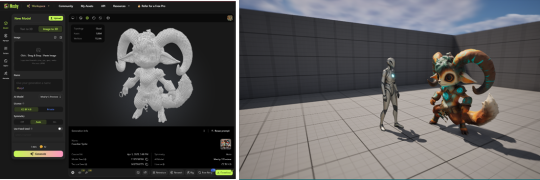
In my second approach, I applied the same concept, but this time I focused on developing my own workflow. I aimed to identify AI-powered tools that could help me speed up repetitive tasks such as UV unwrapping and retopology. Unfortunately, I was unable to find any particularly useful tools. The best AI-powered tool I encountered was Cascadeur, which is an AI-driven animation software.
I spent roughly one week working on this character, as this assignment emphasized research more than my artistic skills. This was the result of my workflow.

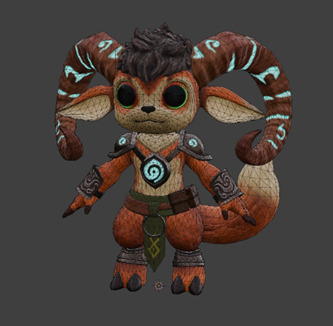
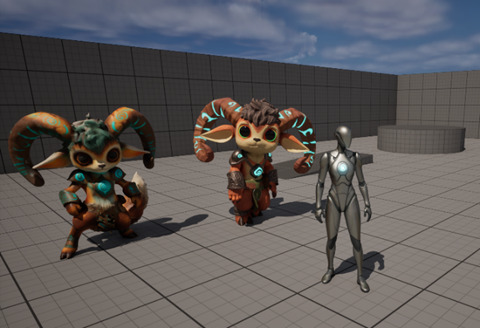
References:
Cascadeur.com. (2018). Cascadeur. [online] Available at: https://cascadeur.com/
Meshy.ai. (2021). Meshy. [online] Available at: https://www.meshy.ai/workspace
OpenAI (2025). ChatGPT. [online] ChatGPT. Available at: https://chatgpt.com/ Adobe (2019). Mixamo. [online] Mixamo.com. Available at: https://www.mixamo.com
0 notes
Text
The Best Labelbox Alternatives for Data Labeling in 2025
Whether you're training machine learning models, building AI applications, or working on computer vision projects, effective data labeling is critical for success. Labelbox has been a go-to platform for enterprises and teams looking to manage their data labeling workflows efficiently. However, it may not suit everyone’s needs due to high pricing, lack of certain features, or compatibility issues with specific use cases.
If you're exploring alternatives to Labelbox, you're in the right place. This blog dives into the top Labelbox alternatives, highlights the key features to consider when choosing a data labeling platform, and provides insights into which option might work best for your unique requirements.
What Makes a Good Data Labeling Platform?
Before we explore alternatives, let's break down the features that define a reliable data labeling solution. The right platform should help optimize your labeling workflow, save time, and ensure precision in annotations. Here are a few key features you should keep in mind:
Scalability: Can the platform handle the size and complexity of your dataset, whether you're labeling a few hundred samples or millions of images?
Collaboration Tools: Does it offer features that improve collaboration among team members, such as user roles, permissions, or integration options?
Annotation Capabilities: Look for robust annotation tools that support bounding boxes, polygons, keypoints, and semantic segmentation for different data types.
AI-Assisted Labeling: Platforms with auto-labeling capabilities powered by AI can significantly speed up the labeling process while maintaining accuracy.
Integration Flexibility: Can the platform seamlessly integrate with your existing workflows, such as TensorFlow, PyTorch, or custom ML pipelines?
Affordability: Pricing should align with your budget while delivering a strong return on investment.
With these considerations in mind, let's explore the best alternatives to Labelbox, including their strengths and weaknesses.
Top Labelbox Alternatives
1. Macgence
Strengths:
Offers a highly customizable end-to-end solution that caters to specific workflows for data scientists and machine learning engineers.
AI-powered auto-labeling to accelerate labeling tasks.
Proven expertise in handling diverse data types, including images, text, and video annotations.
Seamless integration with popular machine learning frameworks like TensorFlow and PyTorch.
Known for its attention to data security and adherence to compliance standards.
Weaknesses:
May require time for onboarding due to its vast range of features.
Limited online community documentation compared to Labelbox.
Ideal for:
Organizations that value flexibility in their workflows and need an AI-driven platform to handle large-scale, complex datasets efficiently.
2. Supervisely
Strengths:
Strong collaboration tools, making it easy to assign tasks and monitor progress across teams.
Extensive support for complex computer vision projects, including 3D annotation.
A free plan that’s feature-rich enough for small-scale projects.
Intuitive user interface with drag-and-drop functionality for ease of use.
Weaknesses:
Limited scalability for larger datasets unless opting for the higher-tier plans.
Auto-labeling tools are slightly less advanced compared to other platforms.
Ideal for:
Startups and research teams looking for a low-cost option with modern annotation tools and collaboration features.
3. Amazon SageMaker Ground Truth
Strengths:
Fully managed service by AWS, allowing seamless integration with Amazon's cloud ecosystem.
Uses machine learning to create accurate annotations with less manual effort.
Pay-as-you-go pricing, making it cost-effective for teams already on AWS.
Access to a large workforce for outsourcing labeling tasks.
Weaknesses:
Requires expertise in AWS to set up and configure workflows.
Limited to AWS ecosystem, which might pose constraints for non-AWS users.
Ideal for:
Teams deeply embedded in the AWS ecosystem that want an AI-powered labeling workflow with access to a scalable workforce.
4. Appen
Strengths:
Combines advanced annotation tools with a global workforce for large-scale projects.
Offers unmatched accuracy and quality assurance with human-in-the-loop workflows.
Highly customizable solutions tailored to specific enterprise needs.
Weaknesses:
Can be expensive, particularly for smaller organizations or individual users.
Requires external support for integration into custom workflows.
Ideal for:
Enterprises with complex projects that require high accuracy and precision in data labeling.
Use Case Scenarios: Which Platform Fits Best?
For startups with smaller budgets and less complex projects, Supervisely offers an affordable and intuitive entry point.
For enterprises requiring precise accuracy on large-scale datasets, Appen delivers unmatched quality at a premium.
If you're heavily integrated with AWS, SageMaker Ground Truth is a practical, cost-effective choice for your labeling needs.
For tailored workflows and cutting-edge AI-powered tools, Macgence stands out as the most flexible platform for diverse projects.
Finding the Best Labelbox Alternative for Your Needs
Choosing the right data labeling platform depends on your project size, budget, and technical requirements. Start by evaluating your specific use cases—whether you prioritize cost efficiency, advanced AI tools, or integration capabilities.
For those who require a customizable and AI-driven data labeling solution, Macgence emerges as a strong contender to Labelbox, delivering robust capabilities with high scalability. No matter which platform you choose, investing in the right tools will empower your team and set the foundation for successful machine learning outcomes.
Source: - https://technologyzon.com/blogs/436/The-Best-Labelbox-Alternatives-for-Data-Labeling-in-2025
0 notes
Text
Master CAD Design with Certified CAD Training in Coimbatore
Looking to enhance your career in design and engineering? Join the top-notch CADD training in Coimbatore, where you can gain hands-on expertise in AutoCAD, CAD CAM, and other advanced design software. Our certified CAD training centre in Coimbatore provides industry-recognized CAD courses tailored for beginners and professionals.
If you're searching for a CAD centre near me, our best CAD training centre in Coimbatore offers comprehensive CAD learning programs designed to help you master industry-relevant tools. Whether you prefer offline training or online CAD courses with certificates, we provide flexible learning options to suit your schedule. Our AutoCAD online course in Coimbatore ensures in-depth knowledge with expert guidance, real-world projects, and practical assignments.
For beginners looking for CAD courses, we offer structured training with step-by-step learning modules. Our AutoCAD certification online enables professionals to upskill and secure job opportunities in architecture, mechanical design, civil engineering, and product development. Our CAD CAM training online covers essential topics, including 3D modeling, simulation, and advanced drafting techniques.
The recognized CAD training programs in Coimbatore provide hands-on experience in design automation, prototyping, and visualization techniques. Our courses are designed to enhance technical accuracy and design efficiency, making you job-ready in the competitive design industry.
Join our certified CAD courses for beginners in Coimbatore and gain expertise in AutoCAD, Revit, SolidWorks, CATIA, and more. With flexible online learning, you can pursue your training from anywhere and receive an industry-recognized CAD certification upon completion.
Take the next step in your career with the best CAD training centre in Coimbatore and get trained by expert mentors with years of experience. Enroll today and become a certified CAD design professional.
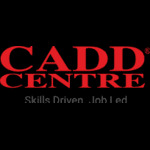
#LEARNING RECOGNIZED IN COIMBATORE#CADTrainingCoimbatore#CADDTraining#CADCourses#AutoCADCertification#CADCAMCourses#LearnAutoCAD#AutoCAD online course training in Coimbatore#CAD courses online training in Coimbatore#Learn AutoCAD online training in Coimbatore#AutoCAD certification online training in Coimbatore#CAD training online training in Coimbatore#Online CAD courses training in Coimbatore#CAD CAM training online training in Coimbatore#CAD CAM online courses training in Coimbatore#CAD center online course training in Coimbatore#CAD cam certification online training in Coimbatore#CAD design courses online training in Coimbatore
0 notes
Text
Storyboard and Production Process
Giorgia Menon
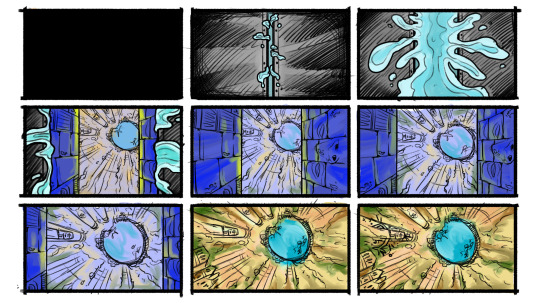
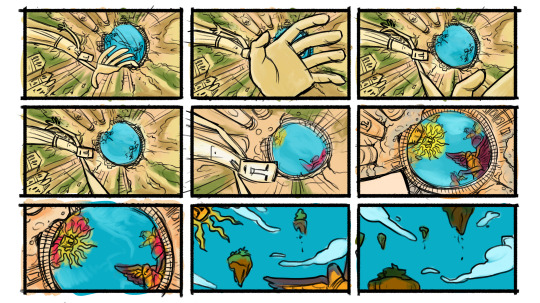
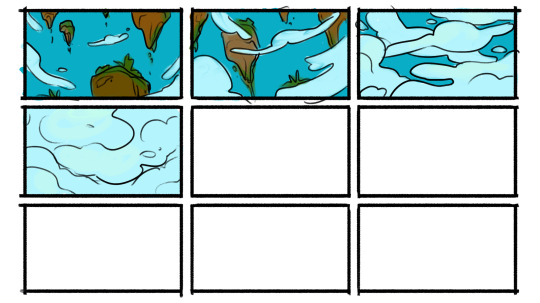
In order to have a better idea of the setting and actions that were going to play in the 2 minutes video, I took care of the storyboard. The movements are going to be very simple: the audience is simply going to be lifted up, first by floating in water and subsequently by a magical statue hand. We still need to properly take a look at the actual timing of all the actions, but we know that everything is going to be quite slow. Given the fact that the whole video is going to take place into a single place only, we need to time every little movement carefully so that the viewer doesn't get bored too easily.
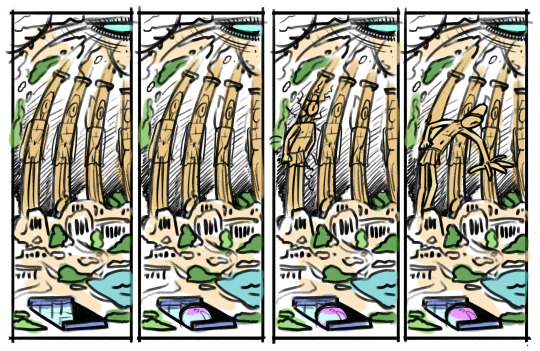
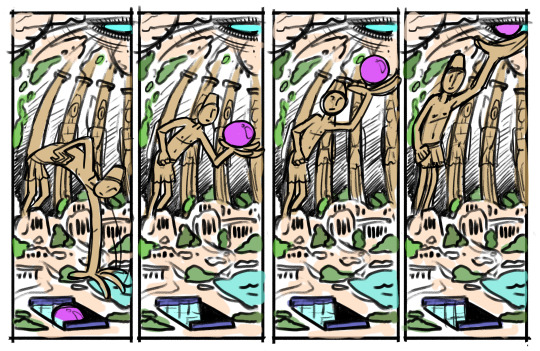
I also thought to provide an external view of what is going to happen. However, talking about it with Saint, we figured that it might be better to include at least two "moving statues" on opposing sides of the scene so that the movement can be visible from all the POVs of the dome. This will not impact our workload too much, since we are going to use the same modelled 3D sketch of the statue that one of my groupmates already made in Blender and just readjust it a bit, to make it look like a different character.















These two different designs carved into the stone were made by me to be placed on the underwater walls that are present at the beginning of our sequence. I drew the compositions on Photoshop and merged them with already existing brick and wall textures from the Unreal Engine software. I tried using different wall patterns with the same drawing in order to achieve the best effect possible, but I think we are going to make the final decision once we place the water element on top of it. Just to be clear, the subjects of these drawings were originated by a bit of research with regards to the culture of the ancient Babylon, to keep the theme going throughout the whole video.








For this week, we also prepared a drafty and simple presentation, to show the rest of the class how much we progressed over the last week. I think this was a very nice way to "pressurize" us and to show our updates in front of classmates and professors, even new ones! Actually having to explain what the thought process is behind an idea and what the actual choices were toward a specific strategy can really help the group understand what the following steps might be and what the project is lacking. The constant confrontation made the whole assignment feel more professional and it gave us the motivation to push through the days and surpass our limits as a team.
Even though we made the first draft of presentation all together as a group, I volunteered to take care of the following versions after the first rehearsal. First of all, I love presentations because they allow my creativity to come through with new fonts and artistic styles, secondly, I wanted to take some "weight" off of the 3D guys' shoulders. I knew this was not really a priority, but I knew this little thing was not going to take any time away from my parts of the project and I knew it had to be taken care of. Moreover, I believe that the visual way that a team presents its work can be really important. Especially in a future a maybe more professional situation, the visuals present on the PowerPoint and the way that you express an idea can really make the difference in the perception of the idea and on the final win.
References:
Biblical Archaeology Society. (2020). Hanging Gardens of Babylon … in Assyrian Nineveh. [online] Available at: https://www.biblicalarchaeology.org/daily/news/hanging-gardens-of-babylon-in-assyrian-nineveh/.
Cooper, T. (2008). British Museum exhibition exposes modern tragedy of Babylon. [online] Pinterest. Available at: https://uk.pinterest.com/pin/313000242834029765/ [Accessed 11 Feb. 2025].
Sinclair, D.A. (2018). The Mesopotamian Blues: musings on Sumerian colour values. [online] Blogspot.com. Available at: https://artisticlicenseorwhyitrustnoone.blogspot.com/2018/03/the-mesopotamian-blues_21.html [Accessed 3 Feb. 2025].
2 notes
·
View notes
Text
The Benefits of Taking Graphic Design Classes Online
Online graphic design classes offer unmatched convenience and flexibility, making them ideal for learners of all levels. You can access high-quality education from anywhere, learning at your own pace without disrupting your schedule. These classes provide diverse content, from design fundamentals to advanced techniques, taught by experienced professionals worldwide. Many platforms, like Coursera and Skillshare, include interactive projects and resources to enhance practical skills. Online learning also connects you to global communities of designers, fostering collaboration and inspiration. Whether you’re starting as a beginner or advancing your career, online graphic design classes make skill-building accessible, affordable, and efficient.
What Are Graphic Design Classes and Why Are They Important?
Graphic Design Classes are structured courses designed to teach the art of creating visual content for various purposes. These classes help students and professionals learn the principles of design, such as typography, color theory, layout, and image editing. Whether you're aiming to start a new career, enhance your current role, or explore a creative passion, graphic design classes are crucial for building foundational skills. They not only teach you technical tools like Adobe Photoshop and Illustrator but also guide you in developing creative problem-solving abilities, essential for creating impactful designs.
Types of Graphic Design Classes Available: Online, In-Person, and Hybrid
Graphic design classes come in various formats to suit different learning preferences. Online classes offer flexibility, allowing students to learn at their own pace and access global instructors. Platforms like Coursera and Skillshare are popular for comprehensive online courses. In-person classes provide hands-on learning and direct interaction with instructors, often found in colleges or local design schools. Hybrid classes combine the best of both worlds, blending online lessons with occasional in-person workshops. Choosing the right format depends on your schedule, goals, and preferred learning style.
Best Graphic Design Classes for Beginners: Start Your Creative Journey
If you're new to graphic design, beginner-friendly classes can help you get started. Courses like "Introduction to Graphic Design" on Coursera or "Graphic Design for Beginners" on Skillshare focus on essential topics, such as basic design principles and simple tools like Canva. Free resources like YouTube tutorials can also be a great way to learn the basics at no cost. These beginner-focused graphic design classes are designed to build your confidence and lay a solid foundation for more advanced learning in the future.
Advanced Graphic Design Classes: Upskill for Career Growth
For experienced designers looking to expand their skills, advanced graphic design classes are essential. Topics like branding, motion graphics, and UI/UX design are common in advanced courses. Platforms like Domestika and LinkedIn Learning offer targeted lessons for professionals, such as creating responsive designs or mastering advanced Adobe Creative Suite tools. These classes often include portfolio-building projects, making them ideal for professionals seeking to attract higher-paying clients or land top-tier jobs in the competitive design industry.
Key Topics Covered in Graphic Design Classes
Graphic design classes typically cover a wide range of topics to ensure a comprehensive learning experience. Core subjects include typography, color theory, composition, and branding. Software training is also a major component, focusing on tools like Adobe Photoshop, Illustrator, and InDesign. Advanced classes might include motion graphics, web design, or 3D modeling. Practical assignments and projects are often part of the curriculum, allowing students to apply their knowledge and build portfolios. This structured approach ensures that learners acquire both technical skills and creative insights.
Benefits of Taking Graphic Design Classes Online
Online graphic design classes offer numerous advantages, including flexibility and affordability. Students can learn from industry experts at their own pace, making it easier to balance learning with other responsibilities. Online platforms like Udemy and Skillshare provide access to a variety of courses, from beginner tutorials to advanced topics. These classes often come with downloadable resources, recorded lessons, and interactive assignments to enhance learning. Additionally, online classes eliminate geographical barriers, allowing students to connect with global instructors and peers. This format is especially beneficial for those who prefer self-paced, cost-effective learning options.
Choosing the Right Graphic Design Classes for Your Goals
Selecting the best graphic design classes depends on your skill level, career aspirations, and learning preferences. Beginners should focus on introductory courses that teach foundational skills and tools, while experienced designers might opt for advanced classes on niche topics like UI/UX or branding. Researching course reviews, instructor credentials, and curriculum details is essential to ensure the class aligns with your needs. Look for programs offering certifications or portfolio-building projects if you aim to pursue a professional career. With so many options available, it’s important to choose a class that fits your goals and helps you grow as a designer.
Conclusion
Graphic design classes are a valuable resource for anyone looking to enhance their creativity and technical skills. From beginners exploring design principles to professionals mastering advanced techniques, these classes cater to diverse needs. Online, in-person, and hybrid formats make learning accessible to everyone, regardless of location or schedule. By enrolling in graphic design classes, you gain the knowledge and confidence to create impactful visuals, build a portfolio, and pursue a rewarding career in design. Whether for personal growth or professional development, graphic design classes are a stepping stone to unlocking your creative potential.
0 notes
Text
Master Geotechnical Analysis with Plaxis Software Training Online

Geotechnical engineering is a valuable component in the infrastructure field since it determines the stability of construction infrastructure. Engineers use comprehensive software like the Plaxis software for doing finite element analysis, modeling soil structure interaction, and evaluating the scopes of foundations. Those interested in sharpening their knowledge of Plaxis 2D Software and Plaxis 3D software can apply for one of the Plaxis training online courses and thus gain the skills to solve various geotechnical situations.
Why Learn Plaxis Software?
Plaxis is the most popular software used in the geotechnical modeling and analysis industries. This makes it possible for engineers to predict the behavior of soil and rocks under different forms of loading in the construction of effective structures. In particular, the software is crucial for slope stability analysis, Plaxis foundation design, and numerical modeling of tunneling work.
By enrolling in the right Plaxis course online, there is enhancement of your capacity to predict risk aspects, enhancement of your capacity of arriving at the best design in addition to allowing for the safe execution of geotechnical projects. The specific benefit of attending online Plaxis software training is that individuals gain the technical skills to solve realistic engineering problems.
What you will learn in the Plaxis Course Online
Plaxis training online in turn comprises a structured course that assists the learners to understand and appreciate the use of Plaxis 2D and Plaxis 3D. The course covers the fundamental types of soil modeling to the most advanced type of simulations for geotechnical analysis and design.
Fundamentals of Geotechnical Modeling
In geotechnical engineering, it is important to understand the nature of the behavior of soil and Plaxis offers a versatile application for interpreting various properties of soil. This includes Mohr-Coulomb and Hardening Soil models which enable learners to appreciate the behavior of the various categories of soils under applied loads. It will help participants understand how to create a believable geotechnical model, outline the material, and assign the correct boundary conditions to obtain realistic solutions.
Advanced Geotechnical Analysis
Some of the problems experienced in geotechnical structures include slope failure, foundation subsidence, and deformations of retaining structures. Plaxis numerical modeling techniques for slope stability analysis, foundation modeling, and reinforcement techniques are offered in the Plaxis course online. Attendees will get to understand deep and shallow foundations, design procedures of slope stabilization and understand the ability between the soil structure. With these techniques, the engineers are in a position to up the safety measures of constructions and at the same time increase construction productivity.
Simulation and Mesh Optimization
The finite element meshing proves to be a key factor in geotechnical modeling to provide precise simulation of the actual models. Part of the training program involves showing learners how to create and optimise the meshes of soil and rock models in Plaxis 2D and Plaxis 3D. This way, using parametric studies, the participants will come to know how changes in various parameters impact on the stability of the soil and how they can best design the facility. The application of such detailed mesh convergence analysis will go a long way in enhancing the accuracy of geotechnical simulations.
Structural Safety and Performance Evaluation
The Plaxis training online also involves the assessment of the structural behavior under varying deterioration conditions. It will teach the engineers how to evaluate the amount of deformity that has taken place, and how to come up with the most suitable measure to undertake to avoid further settlement in future periods. Thus participants in formulating geotechnical facilities are Placement-equipped to avoid, deter, or lessen the effects of external loads water pressure and seismic activities. This training covers the factors that ought to be considered to reduce construction risks and enhance construction performance.
Why Choose Pigso Learning for Plaxis Training Online?
At Pigso Learning, we have specifically developed a comprehensive Plaxis software training online course meant for engineers, researchers, and professional engineers who wish to gain more practical experience on Plaxis 2D Software and Plaxis 3D Software. All our courses are facilitated by professionals with vast experience in geotechnical engineering thus participants get the best training available.
Our Plaxis course online comprises classes with live interactions so learners are able to interact with educators and ask questions or seek clarifications. The participants will also complete problem-solving assignments as well as case-study geotechnical projects that incorporate the more sophisticated geotechnical modeling tools.
Begin your Geotechnical Learning Now
If you intend to grow your geotechnical engineering career, then the best time to enroll with Pigso Learning’s Plaxis training online. Learn more about the Plaxis 2D software, Plaxis 3D software, and FEA techniques and become proficient in the assessment of soil and structures interaction.
Sign up now for PLAXIS Training Course Online and advance your geotechnical engineering knowledge and practice
0 notes
Text
The Best Furniture Design Course for Beginners: A Guide to Starting Your Journey
Have you ever thought about turning simple chairs or tables into something more appealing? As a person with strong creative abilities, I think a career in furniture design would be ideal. Furniture design is a fascinating area of design because it is also an art, a science, and a craft that enables you to create high-quality, unique,e and inventive pieces of furniture as per the demand of the market.
But more on that later – let’s first discuss the best furniture design courses for beginners (and professionals too, like lawyers, aged 18 years and above, etc.) as well as which particular skills do furniture design courses enable you to build and how furniture design colleges like UID (Unitedworld Institute Of Design) can assist you in commencing your new career as a furniture designer.
What is Furniture Design?
Furniture designing is an art, which involves the planning, designing, and production of furniture that is functional, aesthetically satisfying, and environmentally friendly. It includes originality and design and technologies to produce furniture for the home, office, as well as industry. A common practice amongst furniture designers is to combine different materials such as wood, metal, glass, and contemporary composites to produce newly designed and sound furniture items.
The industry has seen changes, factors such as green initiatives, intelligent furniture applications, and integration of technology have been important. A course on furniture design will let you learn how to appreciate art and at the same time design a useful product that can be marketed.
Why Choose a Furniture Design Course?
Motivating yourself and starting your journey with a furniture design course prepares you with the skills, tools, and techniques necessary to thrive in this industry. Here are a few reasons why choosing the right course neglects the need for concern:
Master Important Skills: Courses cover almost all forms starting from a sketch to design concepts, and developing prototypes while selecting different materials.
Practical Learning: Obtaining practical exposure through projects, workshops, and live designing activities.
Promotional placements: learning AutoCAD, SketchUp, Rhino, and 3D modeling tools to help you create the designs that are imagined.
Business Knowledge: It is beneficial in many ways, as some courses arrange mentors from top business leaders so that you have an idea about how things happen practically and realistically in the industry.
Assessment: Establish a collection of interesting and useful creative designs, as this is essential for obtaining employment or freelance work.
Diverse Easy Learning: Be it a complete study at furniture design colleges or choosing among the best online furniture design courses, you can go as per your convenience and requirements.
Choosing the right course is the key to unlocking your potential as a designer and standing out in the competitive world of furniture design.
Top Furniture Design Courses for Beginners
Unitedworld Institute of Design (UID)
UID is one of the best furniture design colleges, offering a variety of courses focusing on beginners. As part of furniture design education, Unitedworld Institute of Design (UID) students aim to integrate imagination, skills, and business knowledge into every aspect of their specialization.
What You’ll Learn:
The curriculum of UID includes fundamentals of furniture design, materials and processes of furniture design, ergonomic design, advanced 3D modeling, and furniture design manufacturing aspects sustainability. Students are trained to undertake the design of residential, commercial, and industrial furniture with modern tools and technologies.
Why UID Stands Out:
An industry-experienced faculty.
All-round design & model-making facilities
Scheduled classes for practical assignments for portfolio development.
Design education with placement components in leading agencies and studios.
UID seems like an ideal option for students who are looking for a comprehensive structure to begin working in the field of furniture design.
Skills You’ll Learn in a Furniture Design Course
A good furniture design course helps you acquire critical skills that are essential for success in the field:
Design Fundamentals: Learn the basics of balance, proportion, and aesthetics.
Material Knowledge: To design durable, sustainable furniture, understand materials like wood, glass, metal, and composites.
3D Modeling and CAD Software: From AutoCAD, Rhino, to SketchUp, learn software tools for precise design and prototyping.
Ergonomics: Create comfortable, functional, user-friendly furniture.
Prototyping: So you can test the designs before going to production.
Sustainability: Discover eco-friendly practices and how to use sustainable materials.
These skills are essential for creating designs that are practical, innovative, and market-ready.
Career Opportunities in Furniture Design
After completing a furniture design course, you’ll have access to exciting career opportunities in various industries:
Furniture Designer: Work with design studios, furniture companies, or start your own business.
Product Designer: Develop unique and functional furniture solutions for mass production.
Interior Furniture Specialist: Collaborate with interior designers to create custom furniture for homes and offices.
CAD Technician: Use CAD tools to create technical designs and prototypes.
Sustainable Design Expert: Focus on creating eco-friendly, innovative furniture pieces.
The demand for furniture designers is growing globally, making it a promising career path for creative individuals.
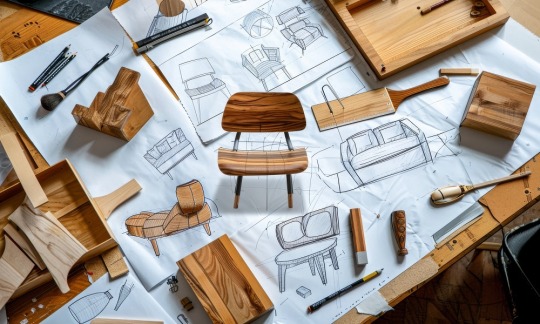
Why UID is the Best Choice for Beginners
UID (Unitedworld Institute of Design) stands out as one of the top furniture design colleges for beginners. Here’s why:
Comprehensive Curriculum: Covers design theory, materials, technology, and sustainability.
Experienced Faculty: Learn from leading industry professionals and designers.
State-of-the-Art Facilities: Access modern design labs, workshops, and cutting-edge tools.
Real-World Exposure: Practical assignments, internships, and live projects prepare you for the industry.
Strong Industry Connections: UID provides placement support and networking opportunities with top design firms.
If you’re serious about starting a career in furniture design, UID offers the perfect platform to nurture your creativity and build a strong foundation.
Starting your journey in furniture design can be incredibly rewarding with the right guidance, tools, and opportunities. Whether you choose an on-campus program at a leading furniture design college like UID or explore the best online furniture design courses, you’ll gain the knowledge and skills to turn your passion into a successful career.
With the growing demand for innovative, sustainable, and functional furniture, now is the perfect time to begin your journey. Invest in a furniture design course, develop your creative skills, and take the first step toward becoming a professional furniture designer.
Read More:- The Best Furniture Design Course for Beginners: A Guide to Starting Your Journey.
0 notes
Text
Master BIM with Expert-Led Courses | BIM Americas Training Programs
In the constantly evolving world of architecture, engineering as well as construction (AEC), Building Information Modeling (BIM) is now an essential element of project success. From streamlining workflows, to enhancing the collaboration of teams and eliminating costly mistakes, BIM is no longer just a luxury, but a necessity. This is where BIM Americas is able to step into the equation, providing professional-led BIM classes that are specifically designed to aid you in mastering this powerful technology and boost your career.
Why Learn BIM?
The AEC industry is swiftly moving towards digital construction methods, as well as BIM plays a key role in the core of this change. If you're an aspiring architect, civil engineer or construction manager, the BIM expertise can make you stand out on a job market that is highly competitive. Here's why:
Enhanced Collaboration: BIM enables all stakeholders--designers, engineers, and contractors--to work on a centralized digital model, ensuring better coordination.
Higher accuracy: With 3D visualization and clash detection as well as live updates in real time, BIM significantly reduces errors and design conflicts.
Increased efficiency: BIM helps teams to complete projects more quickly by identifying problems prior to their occurrence, thus reducing time and cost.
Sustainability and compliance: BIM supports energy-efficient design and assists in meeting international standards for construction and building laws.
If you're a professional seeking to enhance your skills or looking to make a mark in the future mastering BIM is an investment worth making. BIM Americas is the perfect learning companion.
Why Choose BIM Americas?
BIM Americas will be more than a mere training institution. We're a community of educators and professionals in the field dedicated to forming our next generations of BIM experts. What makes our training courses distinct:
1. Expert-Led Courses
Each of our courses is created and taught by professional instructors who have practical experiences. It's not just about learning theory. You get insights from actual research, case studies and hands-on application of BIM tools such as Revit, Navisworks, AutoCAD and many more.
2. Beginner to Advanced Levels
If you're just beginning using BIM or want to become a specialist on advanced workflows BIM Americas offers a course to suit your needs. Our curriculum covers:
BIM for Beginners
Revit Architecture & MEP
Navisworks for Coordination
4D and 5D BIM Implementation
BIM Manager Programs
3. Flexible Learning Options
We know that students and professionals have distinct schedules. This is why we offer:
Online Classes Learn from anywhere, any time.
Classroom Training (Gurgaon) - Get hands-on experience under the guidance of an expert.
Hybrid Software - Combining the best of offline and online learning.
4. Project-Based Learning
In BIM Americas We are a firm believer in the importance of learning in real-time. Our classes include real-time projects, assignments and portfolio-building opportunities to help you prepare for real-world situations in the workplace. It's not just about getting certified, you are prepared for the job.
5. Industry Recognition
BIM Americas certifications are recognized by the top AEC firms as well as employers from India and further. Our alumni are employed in well-known construction firms as well as architectural studios as well as government infrastructure projects.
Who Can Join BIM Americas Training?
Our BIM training programs are appropriate for:
Students studying architecture and graduates
Engineers in civil engineering and supervisors of sites
Professionals of MEP
Interior designers
Project managers
Construction professionals seeking to make the transition to digital workflows
Even if you don't have any prior experience in BIM It is possible to start with our fundamental courses, and then gradually progress to more advanced levels.
Benefits of Enrolling at BIM Americas
Career Development: BIM skills are highly sought-after. Training with us opens the door to rewarding job positions such as BIM Modeler BIM Coordinator and BIM Manager.
Certificate: Receive industry-recognized certificates when you have completed the course.
mentorship Learn one-on-one from industry-specific mentors.
Support for Placement: Our dedicated team helps with resume writing mock interviews, resume building, and job opportunities.
Community access: Be part of our expanding community BIM professionals and students for socializing and sharing knowledge.
Enroll Today and Shape Your Future
The need for highly skilled BIM professionals will continue to rise as the construction industry adopts digital changes. Don't be a slave to the past, build it now with BIM Americas.
Take a look at our courses today and pick which one best aligns with your professional goals. If you're looking for ways to improve your design efficiency, grow into an effective project manager or change to a more fulfilling career, our professionally-led training courses will lead you to success.
0 notes
Text
The two projects I decided work on further for my final are the underwater concepts form the 3D assignment, and the queen from our first assignment.


During the review of my 3D project Leo pointed out that I I had lost some detail in my paintover of the character design, and helped me find the artist Denis Rybchak as an example of balancing detail and a painterly style. So Bringing some of that back, and trying to add more is the first thing I've chosen to tackle. I also wanted to do a back view of the character aided by the 3D model.
While working on these I also took some time to experiment with the idea of adding some areas of a trypophobia texture/rotten flesh, but decided it didn't really add anything to the character. Though I did find that a photo of a crumpet set to a suitable blend mode is a good bases for that effect, so that's fun. I also experimented with the idea of giving the character a tattoo in the style of Maori tamoko. This did feel like it suited the character, though I feel like it'd be best to better research and understand tamoko before going further down that path as I know it's very important to that culture.
The last thing I wanted to do was create a simple layout of images to help clarify the elements of his armor and give a better view of the face. This is something Leo has stressed the importance of, and that I've seen classmates employ to great effect. So it's definitely something I want to get in the habit of.
Photobashing images:
Darkbladeuk.co.uk. (2025). Horizontal Dagger Scabbard. [online] Available at: https://www.darkbladeuk.co.uk/horizontal-dagger-scabbard#gallery-1
(plus those already credited in post about 3D assignment)
Images used for layout:
Mooney, S. (n.d.). Keyhole Sand Dollar. [Photo] Available at: https://commons.wikimedia.org/wiki/File:Keyhole_sand_dollar_01.jpg.
Unknown (2005). Ensis arcuatus. [Photo] Available at: https://commons.wikimedia.org/wiki/Ensis#/media/File:Ensis-arcuatus.jpg.
G, S. (n.d.). Horseshoe Crab. [Photo] Available at: https://stock.adobe.com/search?dym=1&filters%5Bcontent_type%3Aphoto%5D=1&filters%5Bcontent_type%3Aillustration%5D=1&filters%5Bcontent_type%3Azip_vector%5D=1&filters%5Bcontent_type%3Avideo%5D=1&filters%5Bcontent_type%3Atemplate%5D=1&filters%5Bcontent_type%3A3d%5D=1&filters%5Bcontent_type%3Aaudio%5D=0&filters%5Binclude_stock_enterprise%5D=0&filters%5Bis_editorial%5D=0&filters%5Bfree_collection%5D=0&filters%5Bcontent_type%3Aimage%5D=1&k=merostomata&order=relevance&search_page=1&search_type=usertyped&acp=&get_facets=0&asset_id=122449008.
0 notes
Text
END OF SEMESTER - FINAL TOUCHES
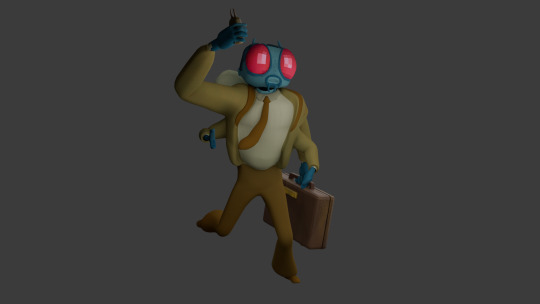
I changed the texture of the model again, I used a soft light layer in Krita to homogenise the colours - creating a more cohesive and visually pleasing colour palette. I did this because the colours were bothering me, they felt too abrasive and didn't fit the 1970's office worker vibe I wanted for this character. The sickly yellowish hue, I feel, ties the character together. I also removed the bright shine in the middle of the eyes - I thought it was too distracting and the pixilation effect looked out of place. My intention was to create the effect of a compound eye - like real flys have, by using pixilation to replicate the almost segmented look of compound eyes, but it didn't work. Instead in the newer texture, I used a subtle texture technique. I think it works far better as it's far less jarring.
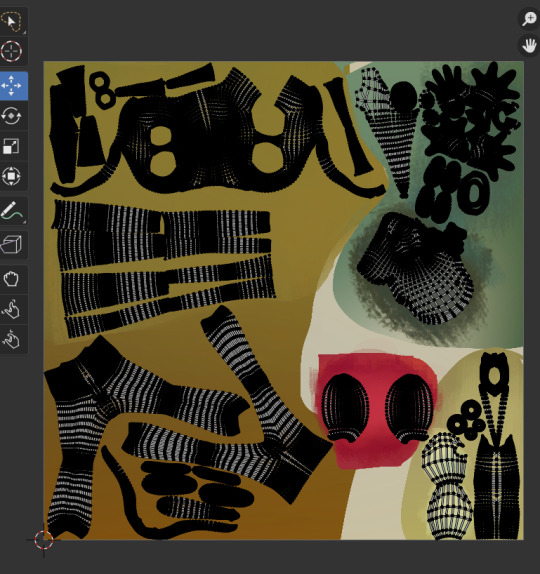
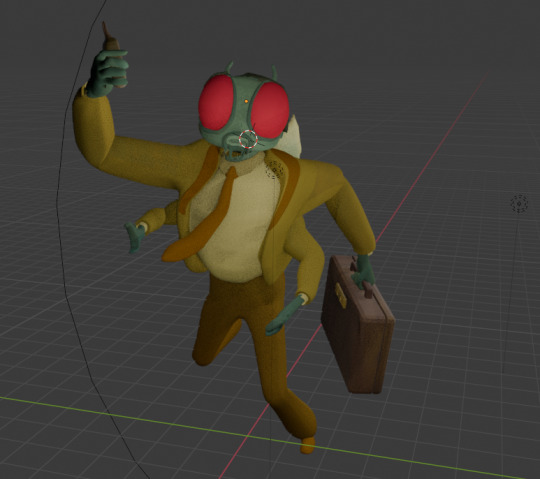
I think I've kept a good enough pace with this assignment, at this point, all I have really needed to edit was few typology issues and refining the textures. UV's have largely been a trail and error thing for me, I've had a lot of difficulty understanding them, I think I'm starting to understand, but I'm sure I'll have a look at them again tomorrow and edit them again. Looking at references online has really helped - looking at unwrapped models by professionals (like the one below) helped me visualize how to flatten out a 3D object.

I would love to get to a stage where I can unwrap in one clean sheet like the one below - I want to focus on UVs more, as that's an area I really struggled with in the last module. In my UVs, I tried to make mine more easily identifiable as the part of the model they are representing - particularly with the hands. Previously, the hands of my models in the UVs look like just one big blob, but in other UVs I saw online, the fingers where each clearly defined. Through trial and error, I was able to somewhat replicate it in my own UVS, making it easier to identify the hands when making the texture.

I also re-did the Normal Map in substance, I had trouble earlier with my previous UVs, where the textures in Substance would be oddly stretched, especially along the arms, although I don't think my new UVs are perfect, they have certainly helped in this regard, as I no longer have this issue. Again, I mainly focused on textures for his clothing, I wanted to make them look somewhat rough and coarse, like it's older clothing, made out of stiff, itchy wool. I think this adds to the stuffy office working aspect of his character. I also wanted to make his eyes shiny, this is something I did previously and I just really liked how it looked on the model.

Above is a Render in EVVEE, as I had trouble with the lighting when I tried Cycles (no matter what I tried I just couldn't get him to look the way I wanted.) It isn't the best but I love how luminous he looks.
0 notes
Text
Need professional AutoCAD assignment help? Look no further!
Our team of PhD writers is here to provide you with top-notch assistance for all your AutoCAD projects.
Whether you're struggling with 2D drafting or 3D modeling, our experts have the skills and expertise to ensure your assignments are flawless..
Get the grades you deserve and relieve your academic stress by entrusting your AutoCAD assignments to us...
1 note
·
View note